Zahrat Al-Madaen. The city of Jerusalem. From the beginning until the birth of Christ - peace be upon him
Jerusalem, often called "The Flower of Cities," stands as a timeless symbol of faith, history, and resilience. Its ancient streets have witnessed the rise and fall of empires, the footsteps of prophets, and the hopes of countless generations. A city revered by three major religions, it embodies a complex tapestry of spirituality, culture, and conflict.
Show key points
- Jerusalem, often described as "The Flower of Cities," represents a profound symbol of spiritual, historical, and cultural importance for three major world religions.
- The city's roots trace back over 6,000 years, originally settled by Canaanite tribes including the Jebusites, whose king Melchizedek played a significant role in its early history.
- It has a long-standing tradition of being repeatedly occupied and contested, having been controlled by Egyptians, Persians, Romans, and many others throughout its turbulent past.
- ADVERTISEMENT
- The Hebrews, led by Prophet David, eventually entered and coexisted with its native Jebusite population, emphasizing the city's ancient existence and diverse heritage before Jewish dominance.
- Jerusalem experienced multiple shifts in power between major empires—including Babylonian exile, Greek rule under Alexander the Great, and extended Roman control.
- Internal conflicts and shifting alliances among Jews, Egyptians, Babylonians, and Romans continually shaped the political and religious landscape of the city.
- From spiritual aspirations to political turmoil, Jerusalem remains a city where history, prophecy, and contemporary struggles merge into a powerful narrative that continues to evolve.
This article takes you on a journey through the rich history of Jerusalem—from its ancient roots to its pivotal moments in shaping the world. We also gaze toward its future, exploring how this enduring city continues to evolve amidst modern challenges. Join us in uncovering the story of a place where the past, present, and future converge in a tale of beauty, struggle, and profound significance.
Recommend
Jerusalem.. A long past and a painful present

There is no human being without a past, nor are cities, and our talk today is about one of the most important cities in human history, that city that is steeped in antiquity and to which everyone is honored to belong and everyone is looking for a foothold in it rightly or wrongly. With great glory or humiliation, and there is no city in the world that fits that description more than Jerusalem. The flower of the world's cities, the owner of history and the first of the two qiblas and the second of the two holy places, the path of the Messenger of God, may God bless him and grant him peace, has belonged to the Arabs since the dawn of history and successively ruled by the pharaohs, Romans, Persians and others throughout history, and everyone exchanged control over it, sometimes it is in the grip of the Romans and at other times it is under the control of the Persians, it is enough to know that it has been occupied more than 44 times, and it is honored by heavenly beliefs, so you do not find a holy book devoid of an event or story in its blessed land, hearts yearn for it and wish Praying in its blessed Al-Aqsa Mosque, that promised land that carries with it many conflicts in the past, present and future, let's turn the pages of history and browse the past with its greatness and pain between those who love it sincerely and those who make nostalgia for it, as it is a treasure for those who owned it and no happiness for those who lost it.
The city of Jerusalem. The Beginning
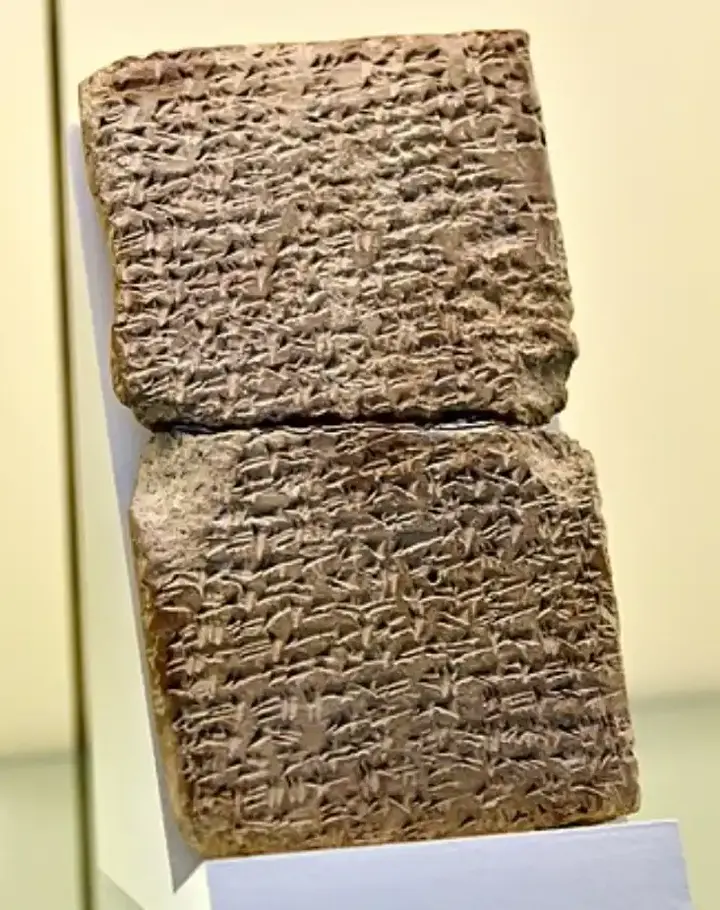
The age of the city of Jerusalem reaches more than 6000 years, so it is one of the oldest inhabited cities in the world, and the first traces discovered to settle the city of Jerusalem date back to the fourth millennium BC, specifically between the years 3500 - 4500 BC, and the first settlers were a tribe of Canaanites (Semitic Arab tribes that migrated from the Arabian Peninsula to the Levant) and they build walls around the walls of the ancient city of Jerusalem, which was built by a king of them named "Melchizedek", who is from the Canaanite Arab Jebusite tribe, and he was a man Believer, the Torah mentions that he received the Prophet of God Abraham (peace be upon him) and offered him bread.
Egyptian control of Jerusalem

The first reference to the name of the city appeared in the era of the modern Egyptian kingdom under the name "Rosalimum" in texts called curse texts, and then it was mentioned in the letters of Amarna as "Ursalem", and the effects confirm that the first to inhabit the city of Jerusalem are the Canaanite Arabs, whom the Egyptians called "Dajahi", then migrations came from western Asia Minor to inhabit the land and the Egyptians called them the peoples of the sea or "Philistines", and then it became under the Egyptian nominal rule after the unification of the modern Egyptian kingdom In the middle of the sixteenth century BC during the reign of King "Ahmose I" after the expulsion of the Hyksos, where the Egyptians expanded to the east in that period and called it "Jebus", and left its people from the Canaanites and the Palestinians the freedom to govern themselves and only collected taxes from them, and with the passage of time the Egyptian rule receded at the end of the Bronze Age (twelfth century BC), and in 1178 BC led by "Ramses III" the Egyptians recorded a battle they called "Dajahi", which is the ancient Egyptian name For the Canaanite tribes, which was the end of the unofficial control of the city of Jerusalem, history records that the Canaanite tribe that inhabited Jerusalem at that time were called the Jebusites, and they called Jerusalem "Salem" or "Salem", which later became "Ursalem" and then "Jerusalem" and meant peace or the mountain of peace.
The appearance of the Children of Israel and their entry into the city of Jerusalem
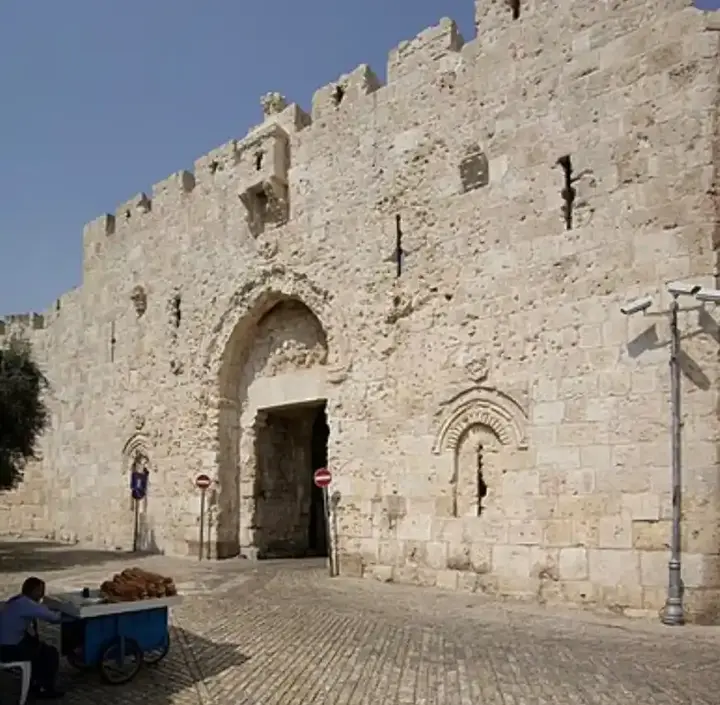
The children of Israel (Hebrews) entered after great trouble to the city of "Jerusalem" in the middle of the tenth century BC under the leadership of the Prophet of God "David" peace be upon him after they refused to enter it previously with the Prophet of God "Moses" peace be upon him because of their fear of facing its people to the severity of their shares and strength, who were called in the books of the Jews as "Jebusites" or "Philistines" and in the books of the Arabs as "Amalekites" or Canaanites, and the Torah mentions the alienation of the Jews from the city of Yabous "Jerusalem", and the Jews did not control the The city of Jerusalem was not expelled from the Jebusites but coexisted with them, which confirms the existence of the city of Jerusalem at least 2,000 years before the Jews. The Jebusites continued their lives inside the city of Jerusalem with the newcomers until the era of the Prophet of God "Solomon", peace be upon him, when he died, the Kingdom of the Jews was divided into two kingdoms, the city of Jerusalem was "Jerusalem", the capital of the southern Jewish kingdom, which was called "Judah", which is the name of the eldest son of the Prophet of God "Jacob", peace be upon him, and the other northern kingdom was called the Kingdom of "Israel", which is another name for the Prophet of God "Jacob", peace be upon him.
Egyptians take control of Jerusalem again

There were many disputes between the Kingdom of "Judah" in the south and the Kingdom of "Israel" in the north, and there were many skirmishes and wars between them until the Egyptians regained control of the city of "Jerusalem" in the late tenth century BC and many other cities that were under the control of the Kingdom of "Judah", which prompted King "Rehoboam" King of "Judah" at that time to pay all the treasures that the kingdom has as a tribute to the Egyptians, the Egyptians imposed the tribute and left them to rule their kingdom in exchange for paying tribute.
The Fall of the Kingdom of Israel after 90 Years
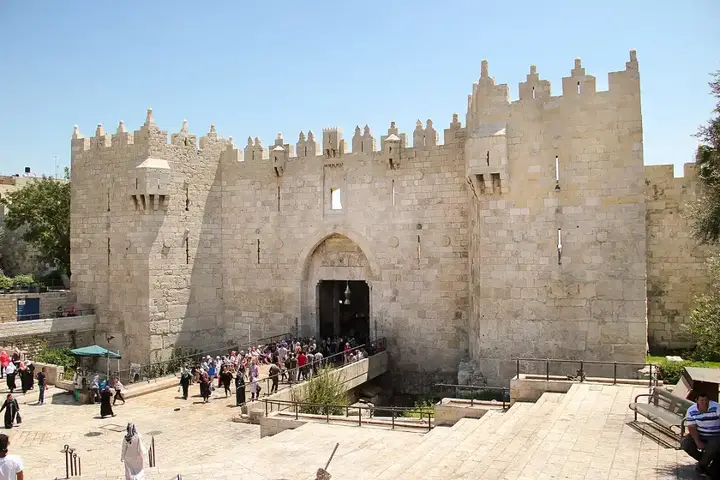
The attempts of the Kingdom of "Judah" to impose its control over the Kingdom of Israel in the north continued, until the conflict reached the height of its strength in the battle of "Mount Zamarim", in which the Kingdom of Israel was defeated by the Kingdom of Judah led by King "Ibn Rehoboam", and the control of the Kingdom of Judah continued in that period of the eighth century BC, and it was further confirmed by the failure of the ancient military campaign from Ethiopia led by "Zareh", which was the reason for the consolidation of the rule of the kings of Judah for several centuries and the establishment of the matter for them in the city of Jerusalem until the advent of Babylonian invasion.
The city of Jerusalem between the Assyrians and the Babylonians
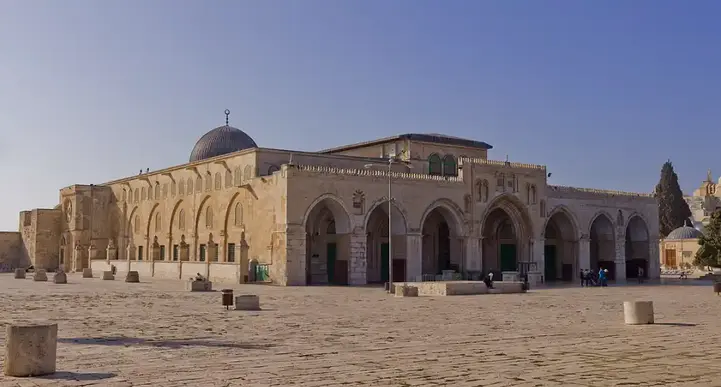
In 715 BC, the kingdom of "Judah" was ruled by a king named "Hezekiah", where he made an alliance with Ashkelon and Egypt, and that alliance tempted him to rebel against the Assyrian state, which was paid the tribute regularly, so he refused to pay the tribute, forcing King "Sennacherib" King of the Kingdom of Assyria to besiege the city of Jerusalem in 701 BC, "Hezekiah" acquiesced to the Assyrian king and emptied all the treasures of the kingdom to pay the tribute, and the Kingdom of "Judah" returned under Assyrian control until the reign of King "Josiah" came in 640 BC, which The conditions of the Assyrian Empire changed and became disintegrated and weakened, and the Babylonian kingdom began to appear, so "Josiah" took advantage of this disintegration and declared the independence of the Kingdom of "Judah" from the Assyrians and supported the Babylonians against the Assyrians, but that did not last long, as an army moved from Egypt to extend a helping hand to the Assyrian king in Syria, where the pharaoh "Nechau II" equipped a large army in 609 BC and headed east using the coastal road, so King "Josiah" tried to stop the Egyptian army and prevent it from entering its lands as support for the Babylonians, but it was defeated and killed, However, the Assyrians could not stop the Babylonian march, but the Egyptians retained the rule of the city of Jerusalem and appointed it "Jehoiakim" after they isolated his brother "Jehoahaz" and took him prisoner with them to Egypt, and the rulers of the Kingdom of "Judah" changed their loyalties many times in that period of history, whenever they saw a strong king, whether Egyptian or Babylonian, they joined him, so they joined Nebuchadnezzar king of the Babylonians against Egypt, but when he failed to occupy Egypt, they returned to support the Egyptians and declare their loyalty to them, until "Nebuchadnezzar" regained his balance and snatched The Levant from the hands of the Egyptians and then went to the siege of the city of Jerusalem in 599 BC, whose king "Jehoiakim" died under the siege that lasted 3 months until the city of Jerusalem fell into the hands of the Babylonians in 586 BC and the inhabitants of the Kingdom of "Judah" and the neighboring kingdoms of "Moab" and "Ammon" were taken as captives to Babylon in what is known in history as the Babylonian captivity, as they were all allies of the Egyptians in their war against the Babylonians, and the population of the Kingdom of "Judah", including the city of Jerusalem, was approximately 10,000 inhabitants.
The city of Jerusalem and Alexander the Great
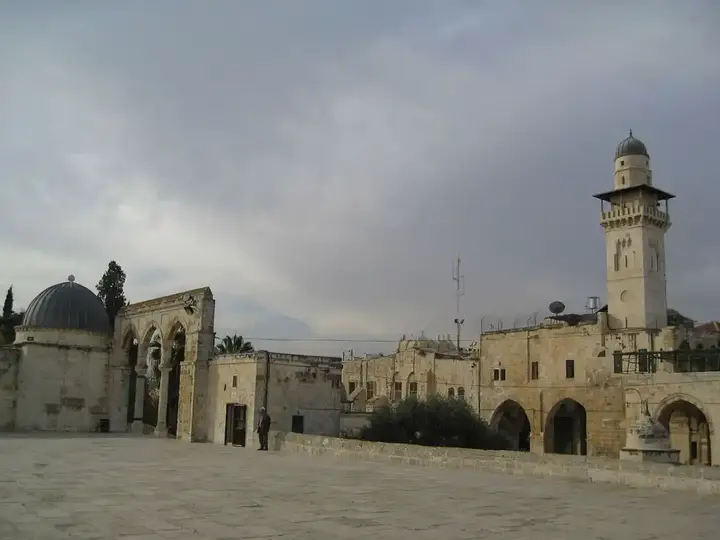
The city of Jerusalem went through a period of conflicts between the Persians and the Greek kingdom, which succeeded under its leader Alexander the Great "Alexander of Macedon" to eliminate the Persian Empire and occupy all its lands after the death of its king "Darius" in a series of battles that began in 334 BC, and the Holy Land becomes within the fifth state of the Greek Kingdom, especially the city of Jerusalem, the heart of the Holy Land, in which the Jews residing in it welcomed Alexander the Great and handed him the keys to the city despite the resistance of the Gaza Strip to the Greek invasion to begin the period of rule The Greek rule of the city of Jerusalem and its surroundings, that rule lasted only ten years and ended with the death of Alexander and the division of the territory of the Greek kingdom among the commanders of his army and the establishment of two states on its ruins.
Jerusalem in Roman times
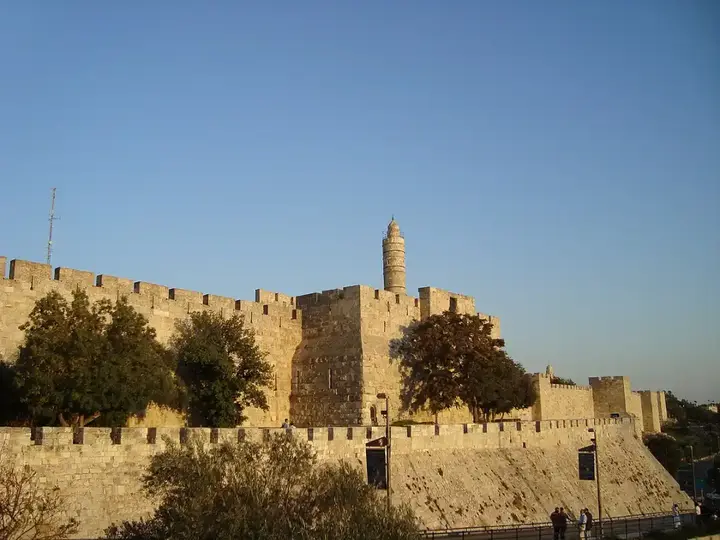
After the death of Alexander of Macedon in 323 BC, internal divisions occurred among the commanders of his army, and Seleucus I acquired the city of Jerusalem as part of the Seleucid kingdom, which extended east to include all the territory of the Persian kingdom in addition to Anatolia (present-day Turkey), marking the beginning of Roman rule over the Holy Land, which will continue until the Islamic conquest. The Romans deposed all the Greek rulers of the Holy Land and its surroundings, changed the currency, established their rule in the city of Jerusalem, and imposed high taxes on its inhabitants.
Internal conflict in the Roman state
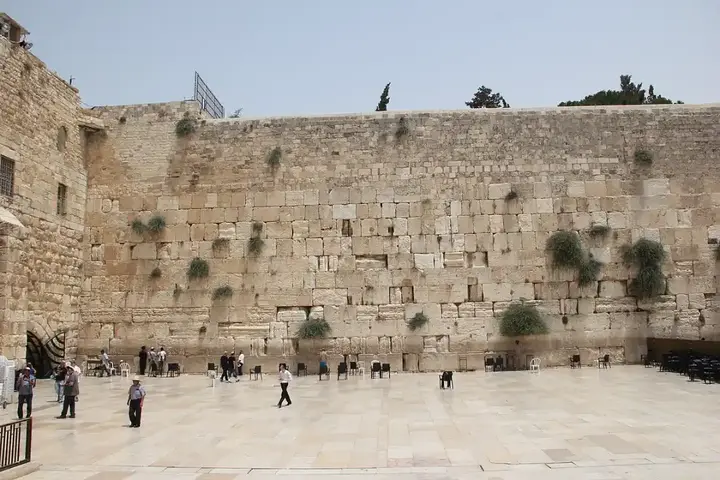
In 48 BC, a revolution occurred in the city of Jerusalem against the Romans as a result of the exile of "Aristotle Paul", the priest of the Pharisees in the Holy Land, so his son led a revolution that led to the mobilization of a large Roman army to quell that revolution, the Roman army succeeded in killing the revolution and subjected the inhabitants of Jerusalem to the control of "Julius Caesar" Caesar of Rome, and the revolutionary leader "Antipatre" turned into a strong ally of Caesar and his deputy on all the land of Palestine, which led to the stability of Roman rule in the Holy Land for a period of time. After "Antipater" took over the rule of the Holy Land and the assumption of his sons over the city of Jerusalem and other cities until the assassination of "Julius Caesar" in 44 BC and the difference of the Roman leaders "Antonius" and "Octavius", took advantage of "Hyrcanus" high priest of the Jews in the Holy Land that dispute inside the Roman and pointed to the sons of "Antipater" city rulers in the Holy Land to move and cooperate to kill their father "Antipatre" deputy Julius Caesar killed, so a state of chaos occurred in the Holy Land and began the emergence of the Sassanid state in the scene by helping the leader of the Pharisees. Antiganus, who was the son of "Aristotle Paul", the enemy of the Romans, helped the Sassanid state with information in exchange for his assumption of the governor of the city of Jerusalem and the Holy Land in 40 BC, and the Sassanids succeeded in controlling the Holy Land for two years until they were expelled from it by the Roman commander "Antonius" after he allied with "Herod", one of the sons of "Antipatre", an old ally of the Romans, but the control of "Antonius" on the Holy Land did not last long, as "Antony" was defeated by "Octavius" in the naval battle of "Actium" in 31 BC to become "Octavius" emperor of the Romans, which prompted "Herod" to hasten to declare his loyalty to "Octavius", who changed his name to "Augustus Caesar", so "Herod" became king of the Holy Land, including the city of Jerusalem, and dyed the land with Roman dye to show his strong loyalty to the Romans despite the loud cries of the people of the Holy Land not to obey this intruder Roman emperor, but the Roman emperor was smart so he kidnapped them by building a temple for them in the city of Jerusalem to make them feel that he is interested in its people and their religious traditions. "Herod" died in 4 BC and the rule of the Holy City passed to his sons after him before the birth of the Messiah "Jesus son of Mary" peace be upon him and during the period of his call to begin the story of the second heavenly doctrine on the land of the city of Jerusalem.








